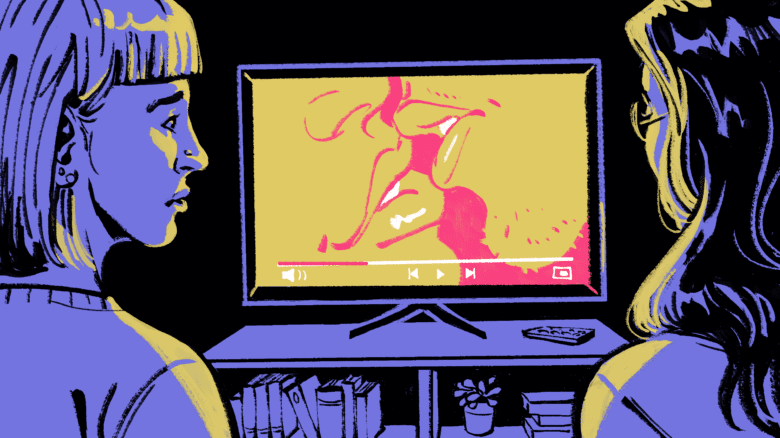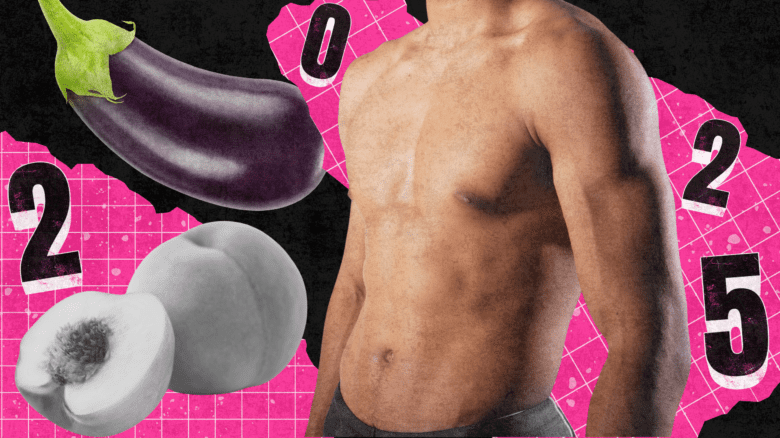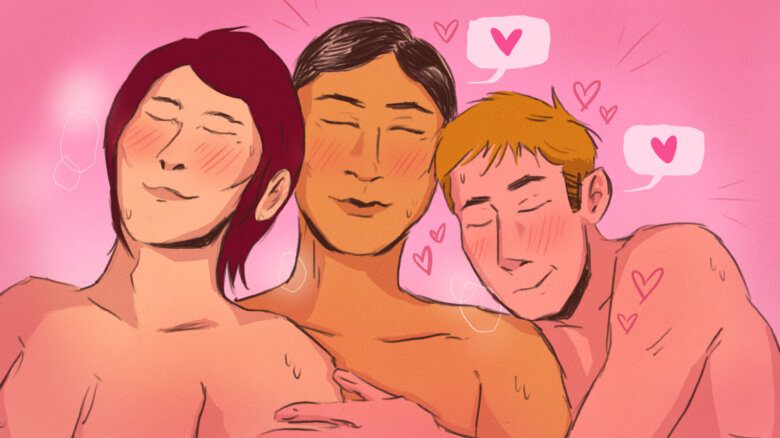
Miyoko 007 and Dynasty Ninja in a photo by Christopher Cushman.
“No offence, it’s just a preference.”
You’ve see the pseudo-apology tucked into the profile of someone you’re cruising on a dating or hookup site, right after his explanation of why he doesn’t want to hear from you. Maybe “STR8ACTINGJOCK4SAME” sticks it after his “no fats or femmes” caveat.
Or maybe you’re more used to seeing it justify someone’s refusal to date blacks or Asians or Latinos. It’s a narrow-minded and, frankly, boring way to conduct one’s love life, but is it sexual racism to post these kinds of “preferences” online?
According to Lali Mohamed, organizer of Queering Black History Month, it absolutely is. “I think we need to call it what it is,” he says. “You can go on a variety of dating sites in Toronto and you see in people’s profiles: ‘No Asians’ or ‘No Blacks.’ The construction of desire as a completely white phenomenon is pretty problematic . . . it’s a really racist construction.”
Part of the point of Queering Black History Month, now in its second year, is to pick apart the subtle (and not-so-subtle) ways in which people who are both black and queer are marginalized and made invisible.
“The idea was to reinsert the lives, histories, achievements and experiences of African/black/Caribbean LGBT communities,” Mohamed says. “It’s really important to share the stories that I couldn’t find in libraries or community centres or the gay press or at non-profits . . . The stories were being kept in a collective memory, but we need to share that to resist the racism in the mainstream queer community and the homophobia and transphobia in the black community.”
While Mohamed knew there would be interest in a panel discussion called Queering Black History when he was organizing it last year, he didn’t anticipate just how popular the event would be. “We thought at first, ‘Oh, 30 people are gonna show up.’ But then 200 people showed up. There weren’t enough chairs!”
This year’s focus is on Toronto’s burgeoning ballroom vogue scene. Alongside the panel discussion is a photography exhibit by Christopher Cushman and a special performance by the legendary House of Monroe.
Fans of the movie Paris Is Burning know about ballroom in its 1980s New York incarnation, but it’s existed in an official capacity in Toronto for only five years. And while it’s easy to cheer on a performer giving fierce “banjy” realness or throwing some particularly choice shade, for Mohamed at least, there’s more to the ballroom scene than theatrics.
“Paris Is Burning is also about how these young queer black men and women created families. Which a lot of the time people forget. They’re like, ‘Oh my God, they’re so fierce!’ or ‘Look at them duck-walk!’ or ‘Look at them do a suicide-drop!’ And they forget about the ways they create and sustain their foster families. In a world of racism, homophobia, misogyny and transphobia, they resist all of these things and live really authentically.”
The adoption of a “chosen family” after rejection by a biological one is a familiar queer narrative, whatever your ethnicity. But for Mohamed, it’s impossible to take race out of the equation. “The difference is that for some mainstream queer men who are rejected by their families, they’re able to find acceptance within the queer community. And gay black men and women don’t have that luxury because of the racism that persists in the mainstream LGBT community. And so, their rejection is two-fold . . . They leave the violence of homophobia and transphobia, and they’re met with the violence of racism.”
But surely things are more open-minded in multicultural, queer-positive Toronto? Just what is the state of queer racism in our fair city in the year 2012?
“I think it’s pretty pervasive,” Mohamed says. “Walk down Church St and you won’t see the same faces and the same bodies that you would at Yonge and Dundas. It’s a particularly white community, and middle-class. And it’s racist, but it’s also really sexist and fat-phobic and ageist. And for me, for a community that’s been relegated to the margins, it’s disappointing that our analysis of social justice isn’t as nuanced as it should be.”
Of course, there are black people who fit into mainstream queer culture seamlessly and white people who couldn’t feel less at home in it. There are myriad other racial/ethnic/cultural identities that intersect with queerness in different ways. And who ever said walking down Church St was the only way to test the temperature of queer Toronto?
Still, the paradox of belonging to two different marginalized groups is a very real concern with very real consequences.
“There’s this sense of impossibility,” Mohamed says. “It’s like, ‘Wow, you’re black and gay?’ Or, for me, ‘Wow, you’re gay and Muslim?’ And I think that for a lot of young people, that impossibility drives them to suicide, or drives them to really horrible states of isolation.”
The Deets:
Queering Black History Month Panel
Wed, Feb 29, 5:30-8:30pm
Ryerson Students’ Centre
55 Gould St
rsuonline.ca

 Why you can trust Xtra
Why you can trust Xtra


